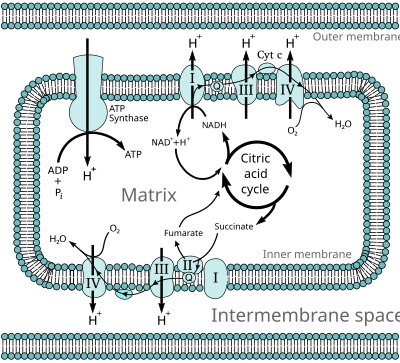
Back سلسلة نقل الإلكترون Arabic Електрон-транспортна верига Bulgarian ইলেকট্রন পরিবহন শৃঙ্খল Bengali/Bangla Lanac transporta elektrona BS Cadena de transport d'electrons Catalan Elektronový transportní řetězec Czech Elektrontransportkæde Danish Elektronentransportkette German Electron transport chain English Cadena de transporte de electrones Spanish


An electron transport chain (ETC) is how a cell gets energy from sunlight in photosynthesis. Electron transport chains also occur in reduction/oxidation ("redox") reactions, such as the oxidation of sugars in cellular respiration.
In aerobic respiration, each molecule of glucose leads to about 34 molecules of ATP (Adenosine triphosphate) being produced by the electron transport chain. This is by far the most productive part of respiration.[1]
- ↑ Rich P.R. 2003. The molecular machinery of Keilin's respiratory chain. Biochemical Society Transactions 31 (pt 6): 1095–1105. doi:10.1042/BST0311095 PMID 14641005